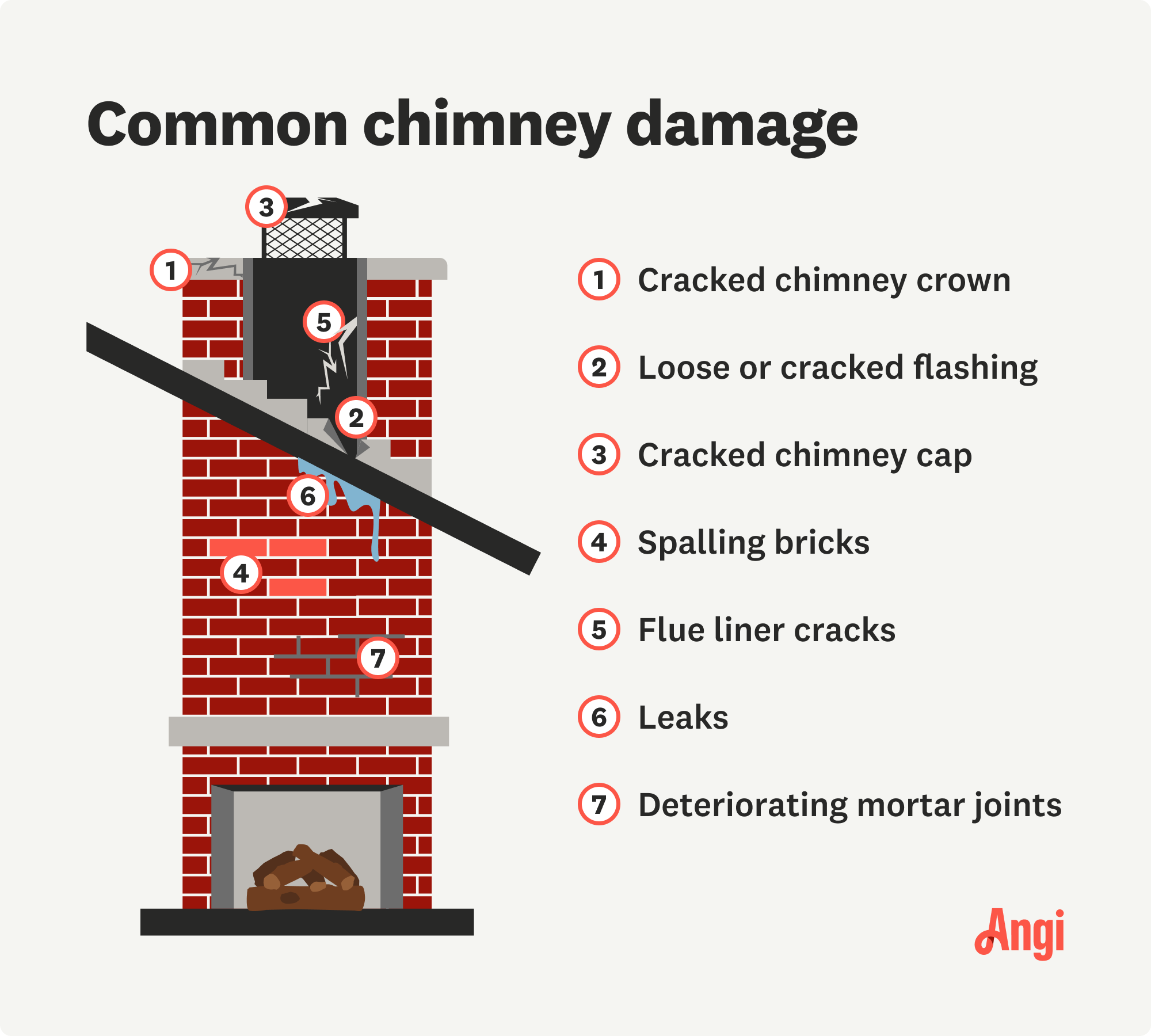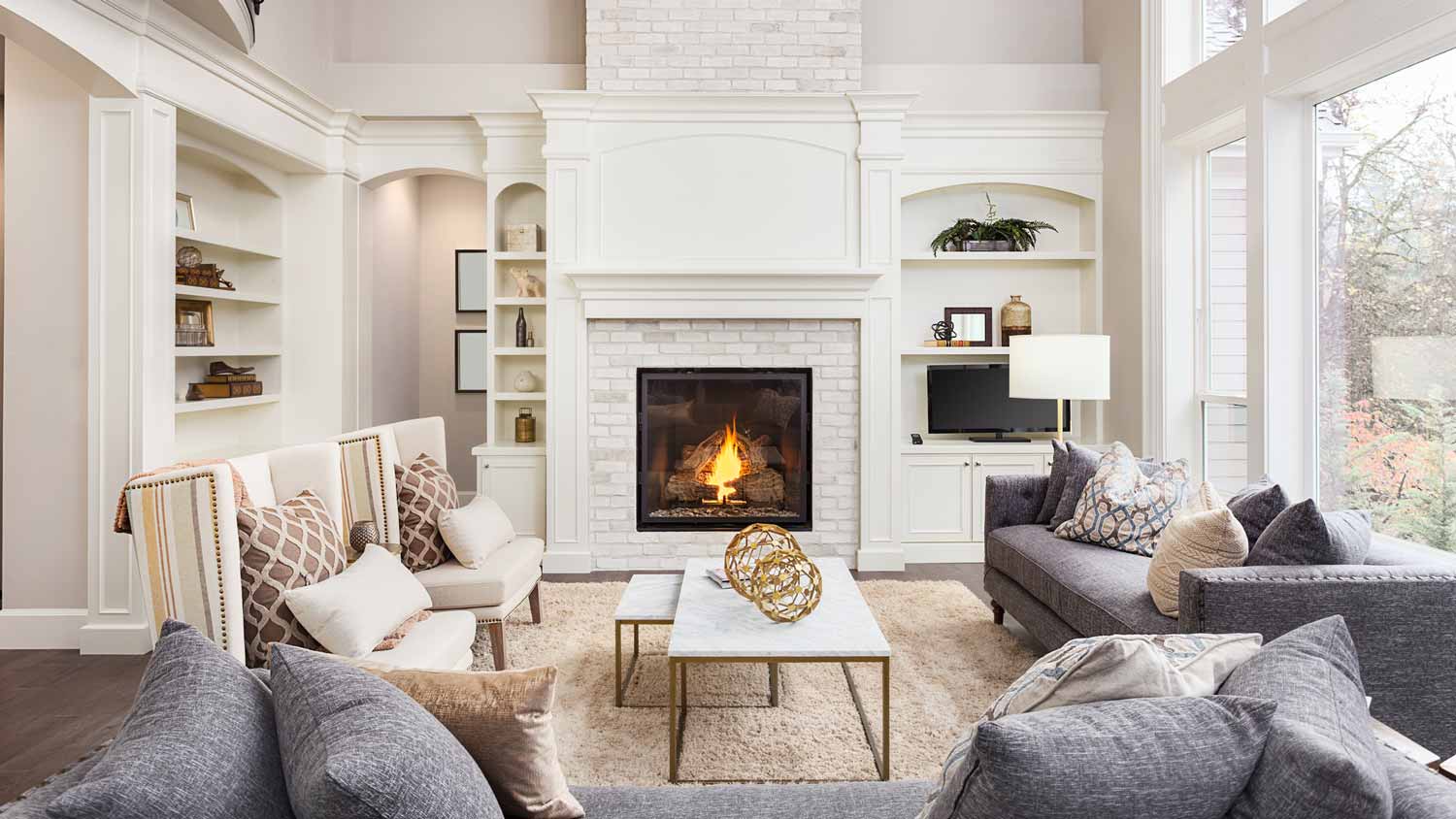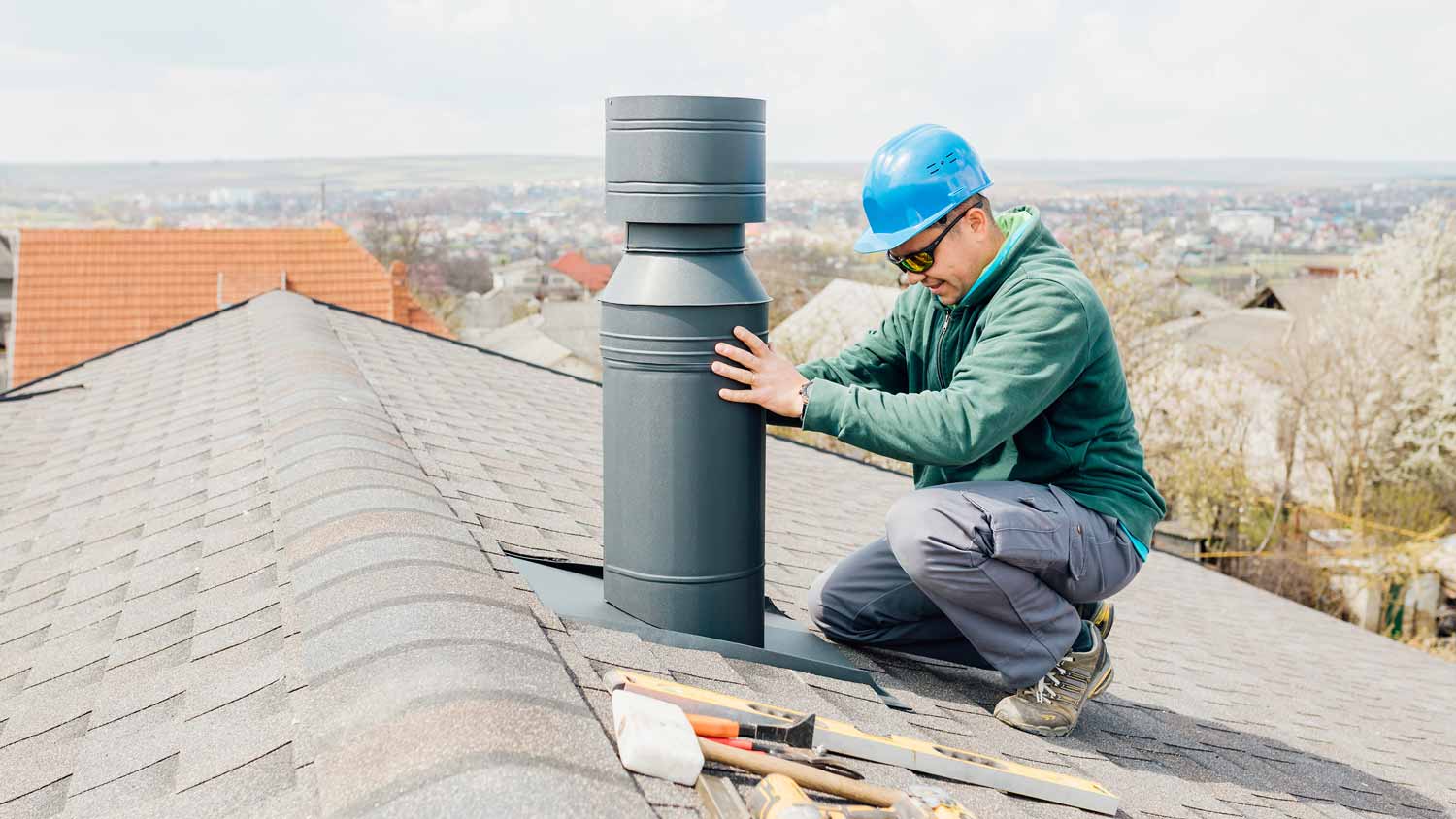
Your chimney inspection cost will vary based on the type of inspection, how accessible the chimney is, the chimney size, and the number of flues.
Get to the bottom of your leaky chimney


It’s not normal for a chimney to leak when it rains.
Chimney leaks could be caused by structural damage or an issue with your crown, liner, cap, or flashing.
Have a pro complete frequent chimney inspections to reduce the chance of chimney leaks.
Your chimney is supposed to keep smoke and other health hazards out of your home, but sometimes, it might let in things that it shouldn’t—like rain. If there’s water coming down the chimney in heavy rain, the culprit could be anything from the chimney crown to the liner or the flashing. Here are five possible causes and how to identify them.

Your chimney takes a lot of wear and tear during its lifetime. Depending on where you live, it may endure sunshine, rain, hail, snow, and wind. Over the years, these elements can take a serious toll on the structural integrity of your chimney, sometimes resulting in cracks in the bricks.
If this happens, water can start to leak in through the gaps in your chimney’s masonry. When the temperatures are low enough, water can freeze and expand in these cracks, making them wider. As a result, your chimney will let in more moisture and become less stable—which could ultimately cause it to lean or collapse.
Reach out to a chimney repair specialist near you as soon as possible if you suspect your chimney has any structural damage. Depending on the extent of the damage, they may be able to reinforce it (through a process called tuckpointing), or they may recommend rebuilding or replacing it. On average, tuckpointing costs about $1,500 per 100 square feet, while a partial chimney repair costs between $160 and $750. For a total replacement, you can expect to pay around $10,000.
Your chimney crown sits at the top of your chimney, covering most of the opening. It serves a few important roles, including protecting the bricks that make up your chimney and preventing water and debris from entering your home.
Most chimney crowns are made from concrete, stone, or metal and slope downward, so rain flows toward the ground rather than into your chimney. Although chimney crowns can withstand extreme weather, they may wear down, crack, or chip over time, which can lead to water coming down your chimney in heavy rain.
Because of their high location, you probably won’t be able to spot any damage yourself, so it’s best to call in a pro if you think there’s a problem with your chimney crown. The cost to repair a chimney crown will depend on the exact problem, but it can range from $400 to $2,200.

Fireplaces produce fumes, flames, and extreme heat, which escape your home through a chimney liner (also known as a flue liner). Chimney liners are flexible tubes that run the length of your chimney, keeping the byproducts of your fire out of your house. They also protect your chimney’s masonry and your home’s woodwork.
Steel, aluminum, and clay are three common materials for chimney liners (although clay is more prevalent in older homes). After years of use and exposure to smoke, gasses, and heat, your chimney liner can crack or corrode, depending on what it’s made from.
Unfortunately, chimney liners don’t always show signs of damage, which is why it’s best to have regular chimney inspections. Sometimes, though, you may notice pieces of your chimney breaking off and falling into your firebox. If this happens, stop using your fireplace and speak with a chimney pro right away to minimize your risk of a house fire or health problems. If yours is damaged and needs replacing, a new chimney liner costs between $1,500 to $5,000 to install.
At the very top of your chimney, you might have a chimney cap sitting above the flue. Typically made of steel, aluminum, or copper, the chimney cap prevents rain, debris, and animals from getting into your chimney.
While chimney caps are durable, there are times when they become loose, rusty, or dented. If yours has this type of damage (or is missing altogether), make sure to fix it or install a new one ASAP to stop critters from being able to crawl down your chimney or water from coming down the chimney in heavy rain. Chimney cap repair costs typically range from $75 to $500, depending on the specific problem and type of chimney cap.
Chimney flashing is metal—usually steel, aluminum, or copper—that surrounds your chimney at the point where it meets your roof. Its main purpose is to prevent water from leaking through your roof and chimney.
Like the other parts of your chimney, the flashing can become less effective as the years go on. Some signs of damaged flashing include:
Corrosion
Rust
Patches on your roof
Water damage, stains, or mold in your attic or along your interior walls
You can install or repair flashing yourself, but if it isn’t sealed correctly, it’s easy for water to get into your home. Because of this, working with a pro is often worth the investment and peace of mind. On average, repairing chimney flashing costs between $400 to $1,600—expect repairs to be on the lower end, while full replacement would be in the higher range.

As the various parts of your chimney age and continue to be exposed to the elements, they may deteriorate at some point. In that sense, you might not always be able to prevent a leaky chimney. However, there are some basic maintenance tips to keep your chimney in tip-top shape and, ideally, prevent leaks.
Install a chimney cap: Not every house has a chimney cap, but they are essential in preventing water from coming down your chimney. It’s a good idea to install one if you don’t have one.
Stay up-to-date on your chimney inspections: In general, you should have a pro look at your chimney at least once a year.
Call in an expert for potential problems: If you think there’s something wrong with your chimney, don’t wait for your annual inspection. If possible, have someone check it out as soon as you can.
In general, chimney repair costs between $160 to $750, depending on what needs work. For repointing a chimney, that can cost anywhere between $4 and $25 a square foot, which should stop small leaks. Repairing a chimney crown costs between $150 to $350, but you may be paying several thousand dollars for a full replacement.
Because chimney leaks are usually the result of a more serious issue, such as structural damage, it’s best not to make a chimney leak a DIY job. A professional chimney inspection will uncover where the leak is coming from and what needs to be done to address it, such as repointing your chimney or replacing the chimney crown. You’ll want to ensure the repairs are done correctly to prevent any fire safety issues.
From average costs to expert advice, get all the answers you need to get your job done.

Your chimney inspection cost will vary based on the type of inspection, how accessible the chimney is, the chimney size, and the number of flues.

Discover the average chimney tuckpointing cost, key price factors, and expert tips to help you budget and save on your next chimney repair project.

If you’re experiencing chimney airflow problems, a new damper may be in order. Use this guide to learn what goes into your chimney damper replacement cost.

What is a smoke shelf in a chimney? A smoke shelf is a simple ledge within your chimney that prevents downdrafts and helps direct smoke out of your home.

It protects your chimney from the elements, but what is a chimney crown, and how does it work? Learn more about this essential element of every chimney.

Many issues cause chimney leaking inside a house. Here is how to identify the source of the problem and take steps to prevent future issues.